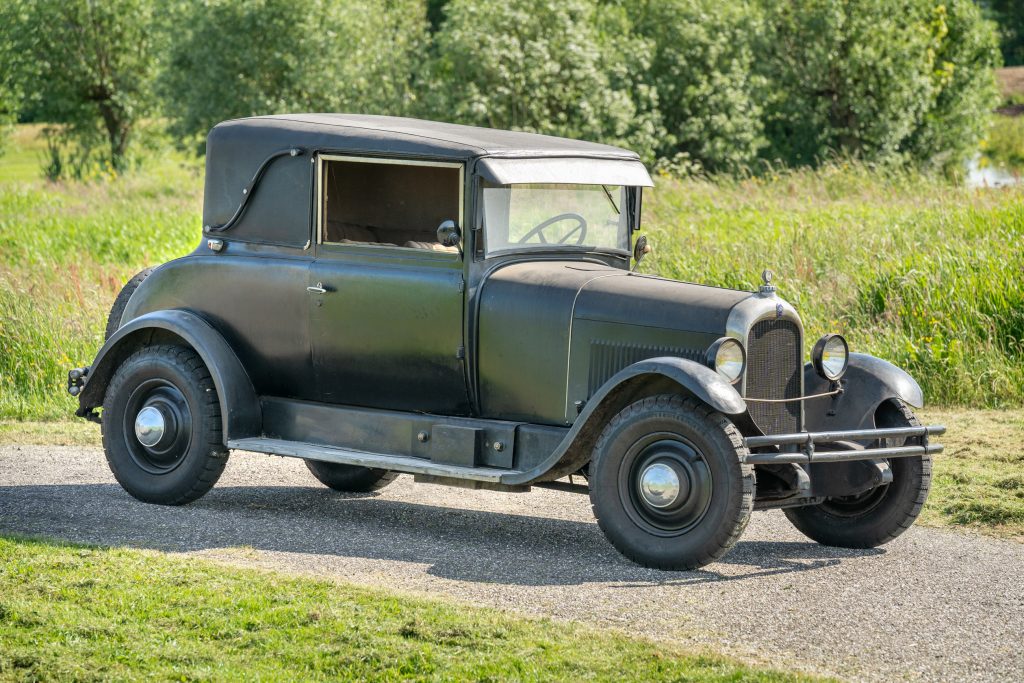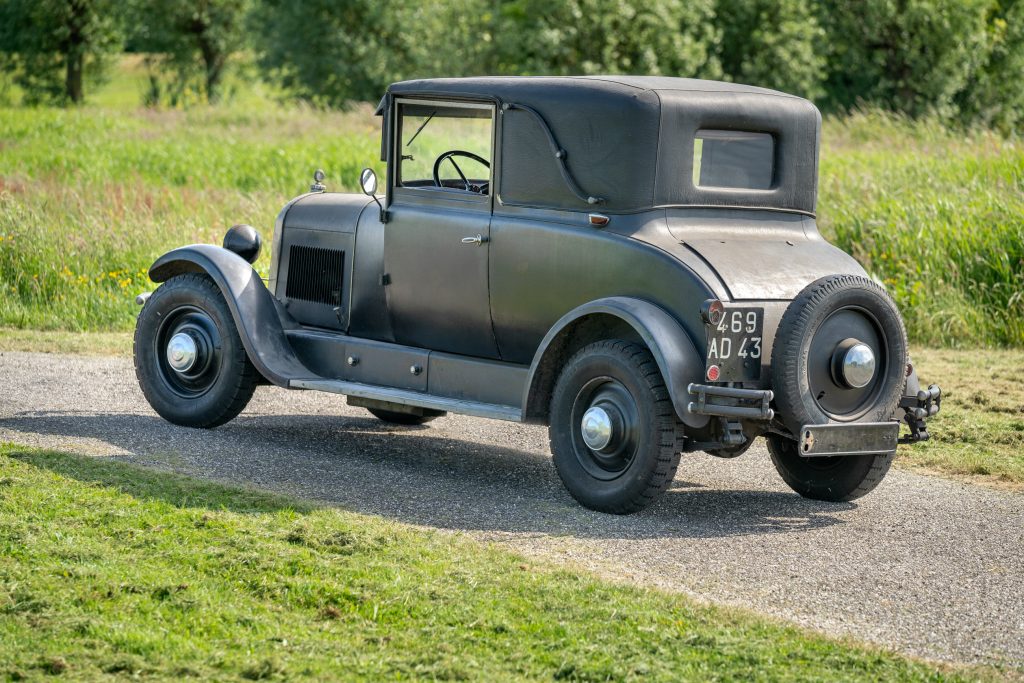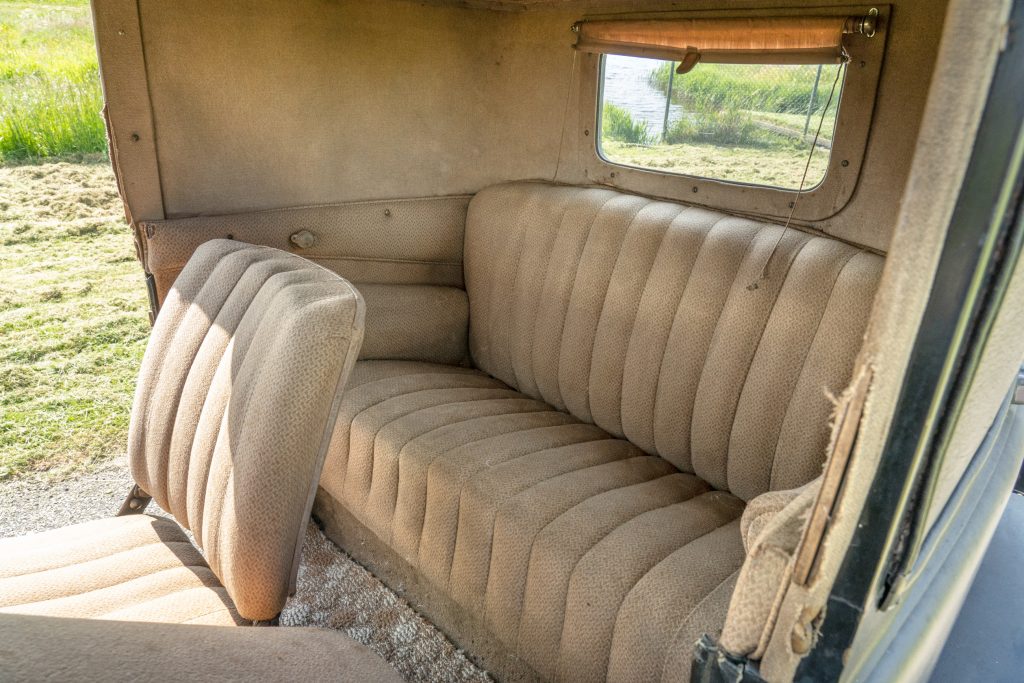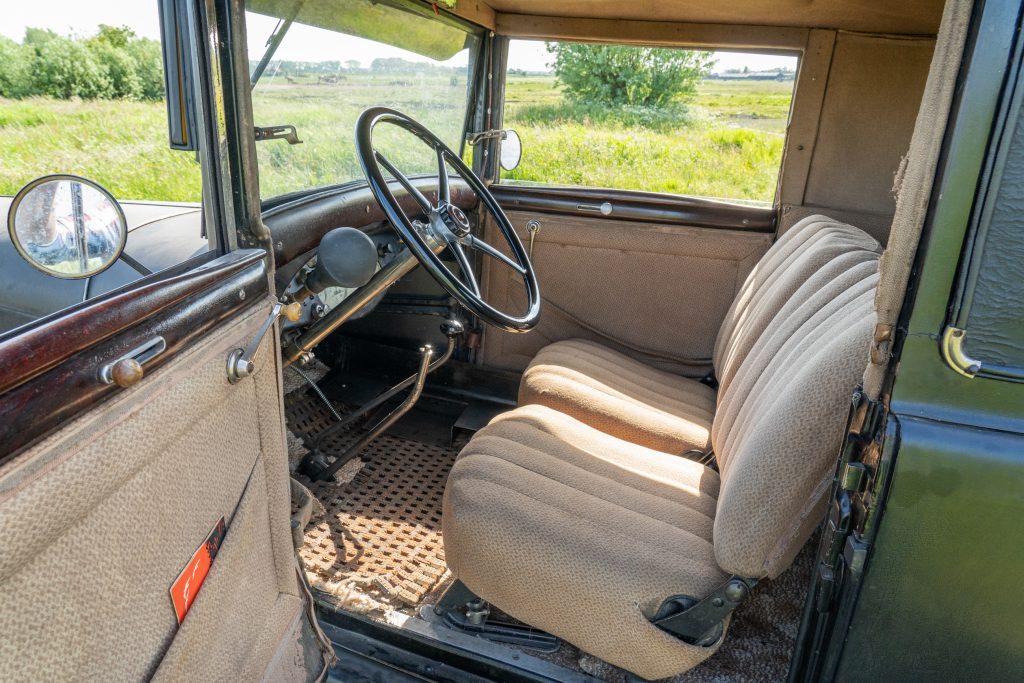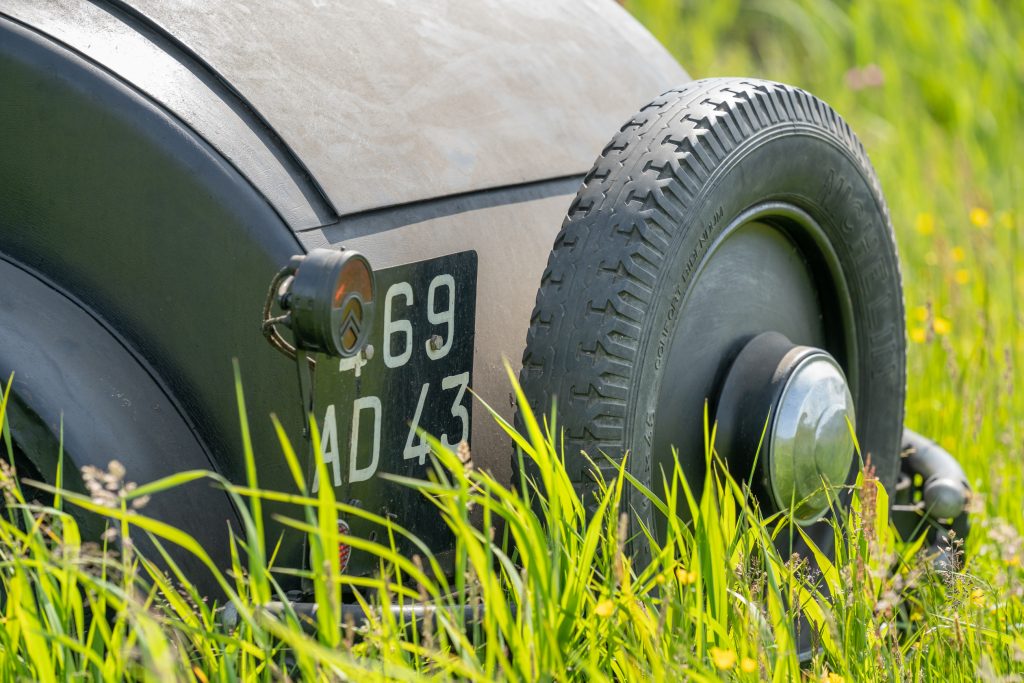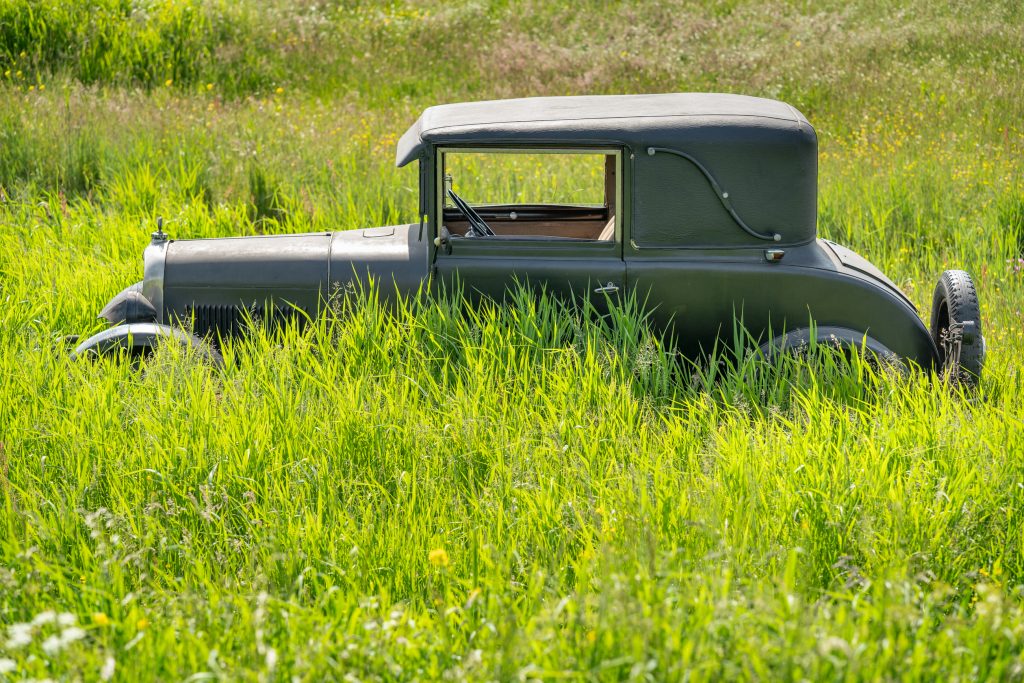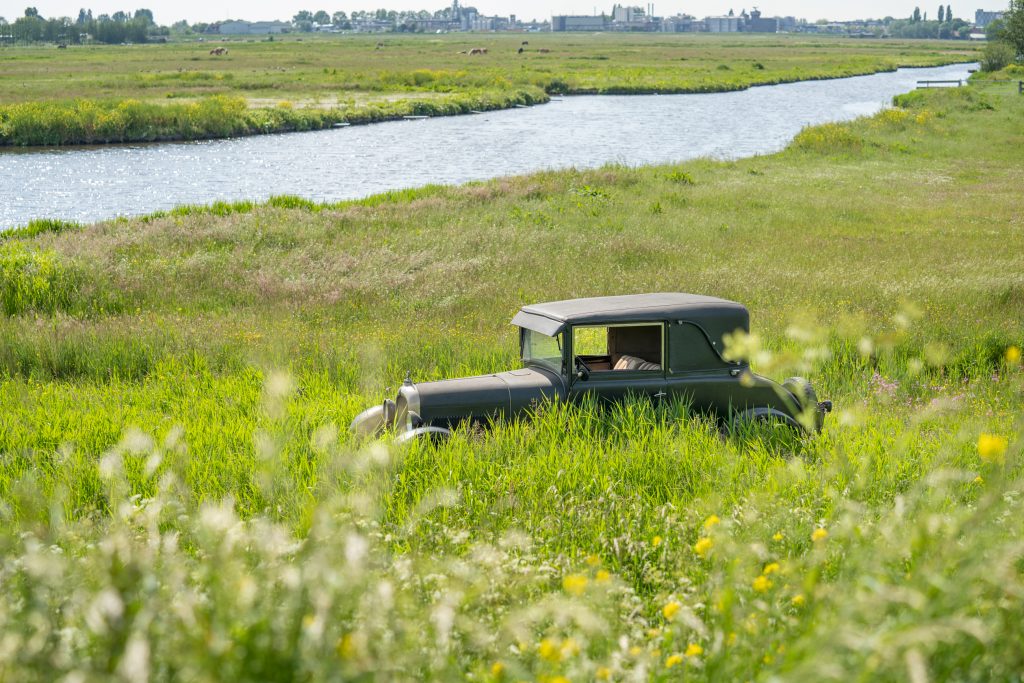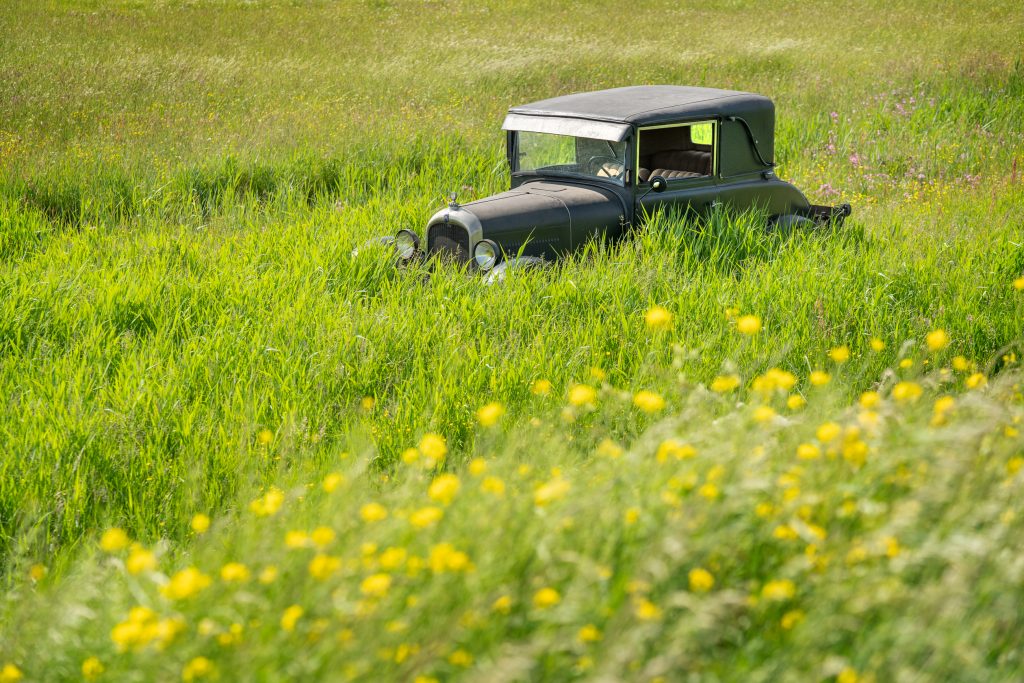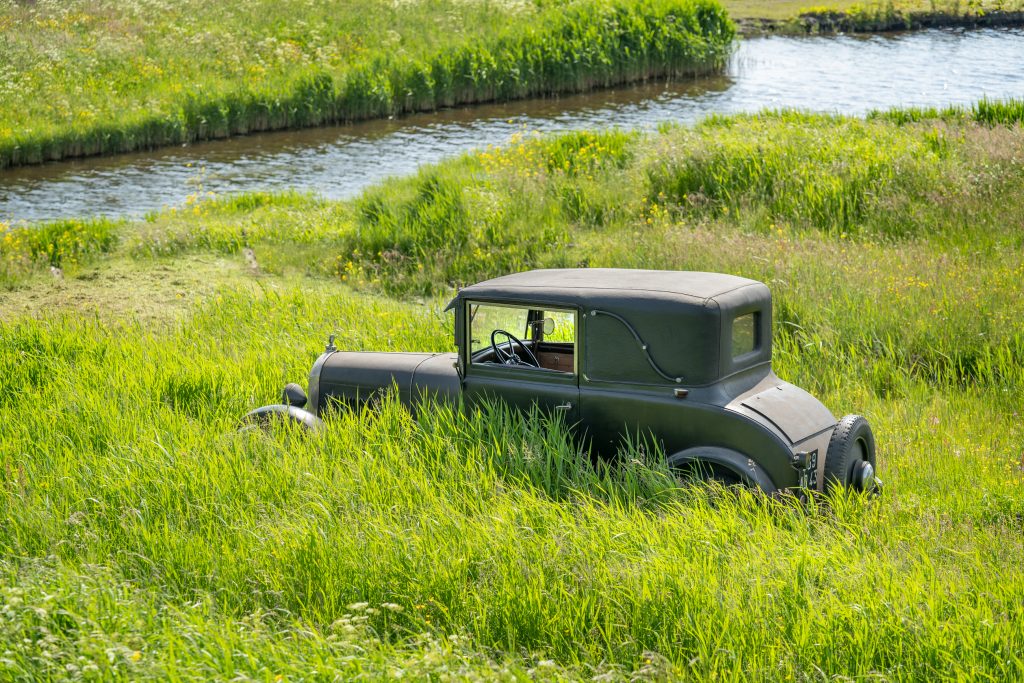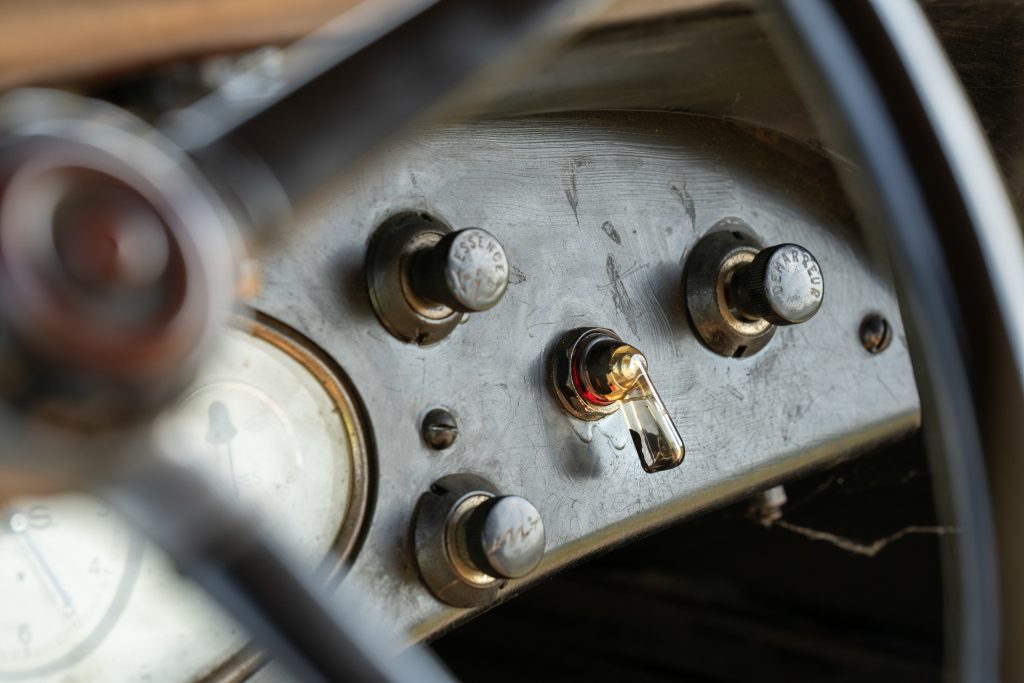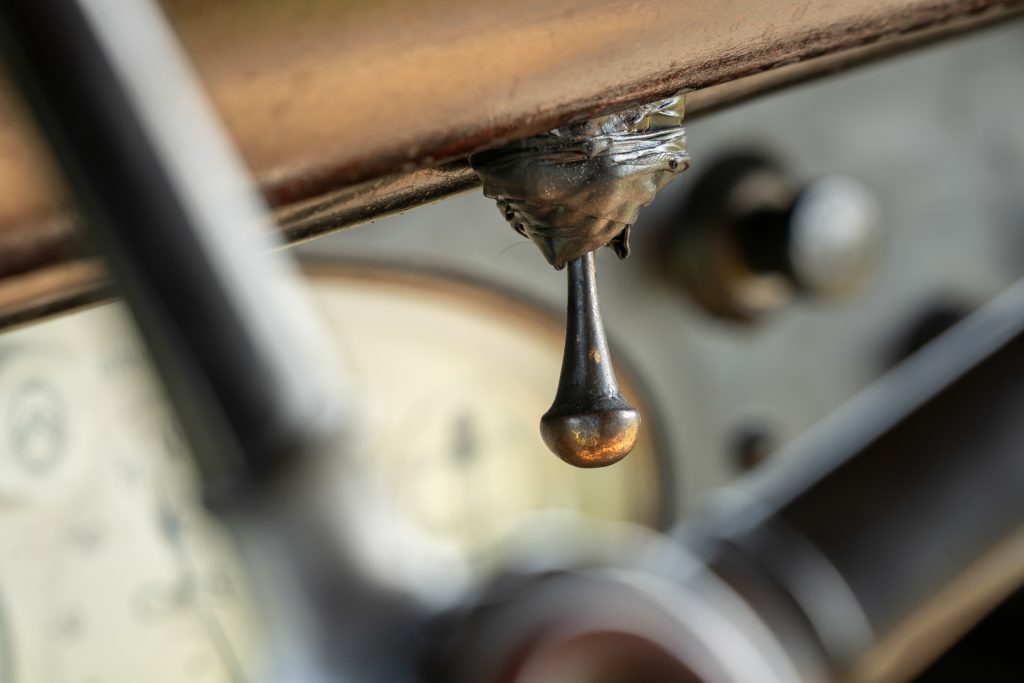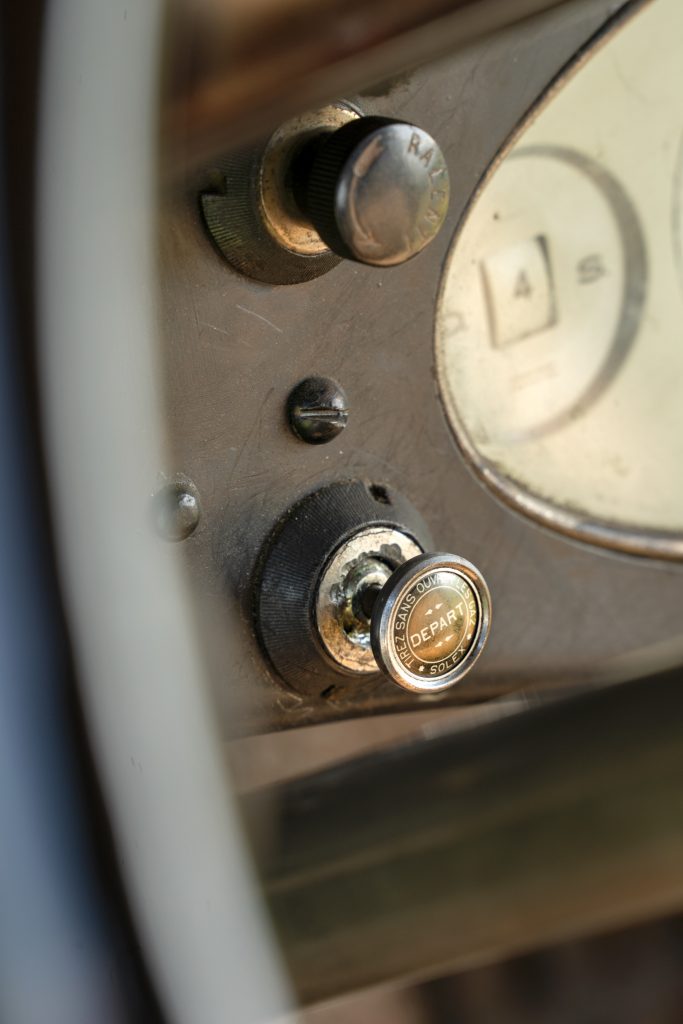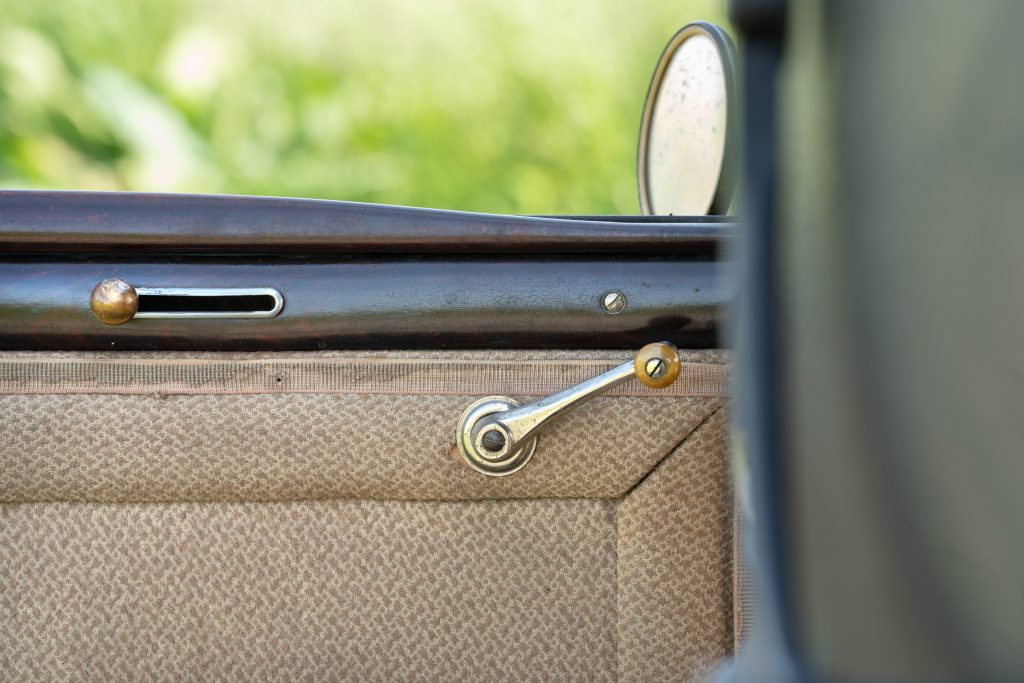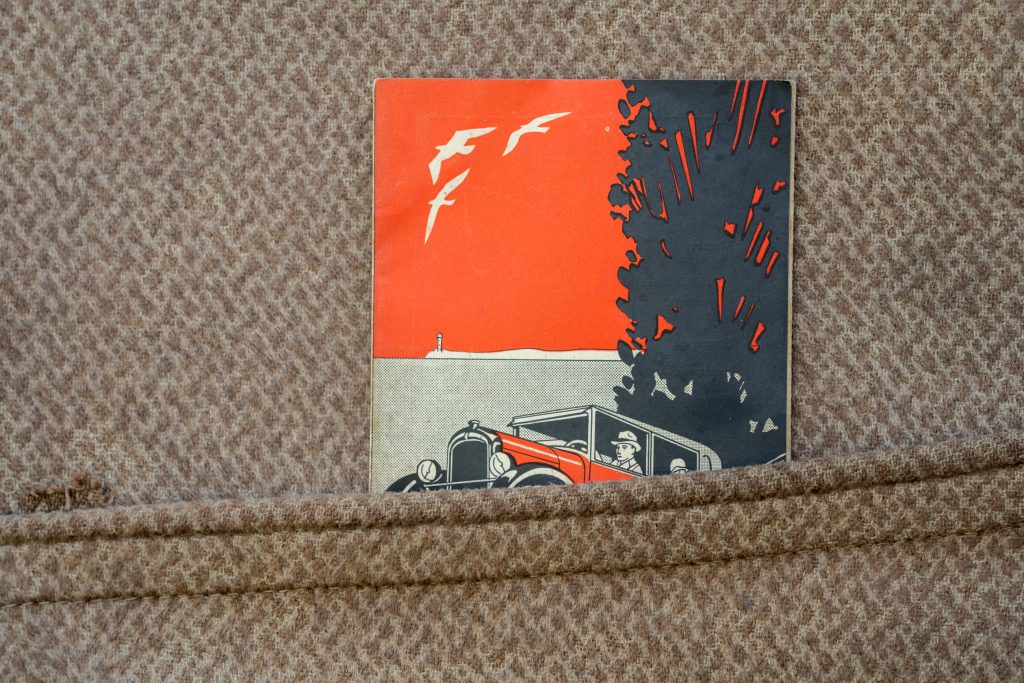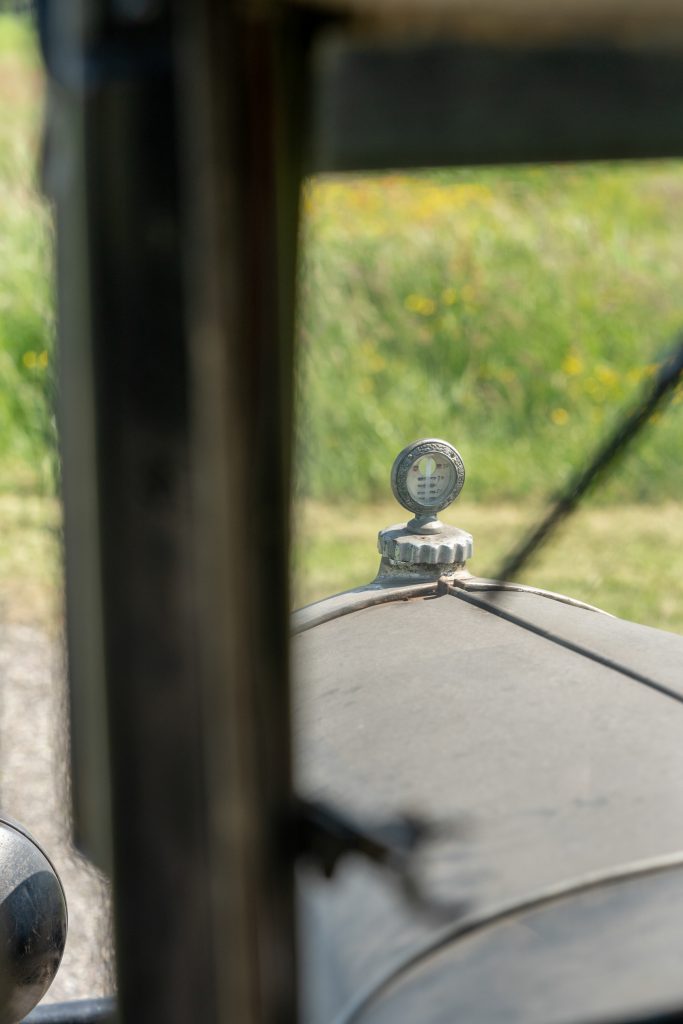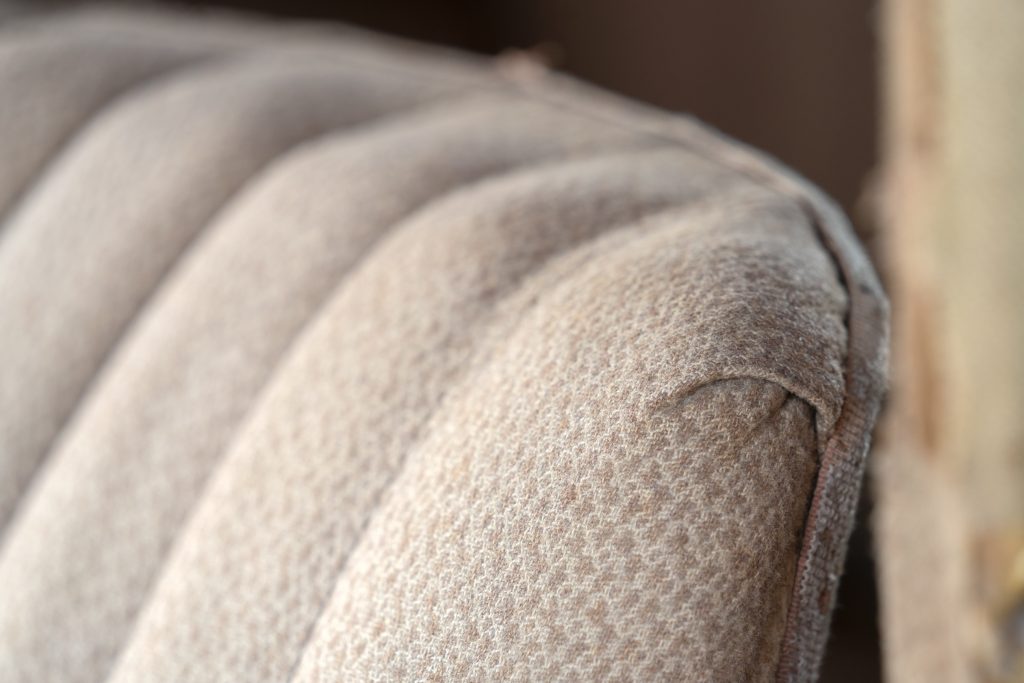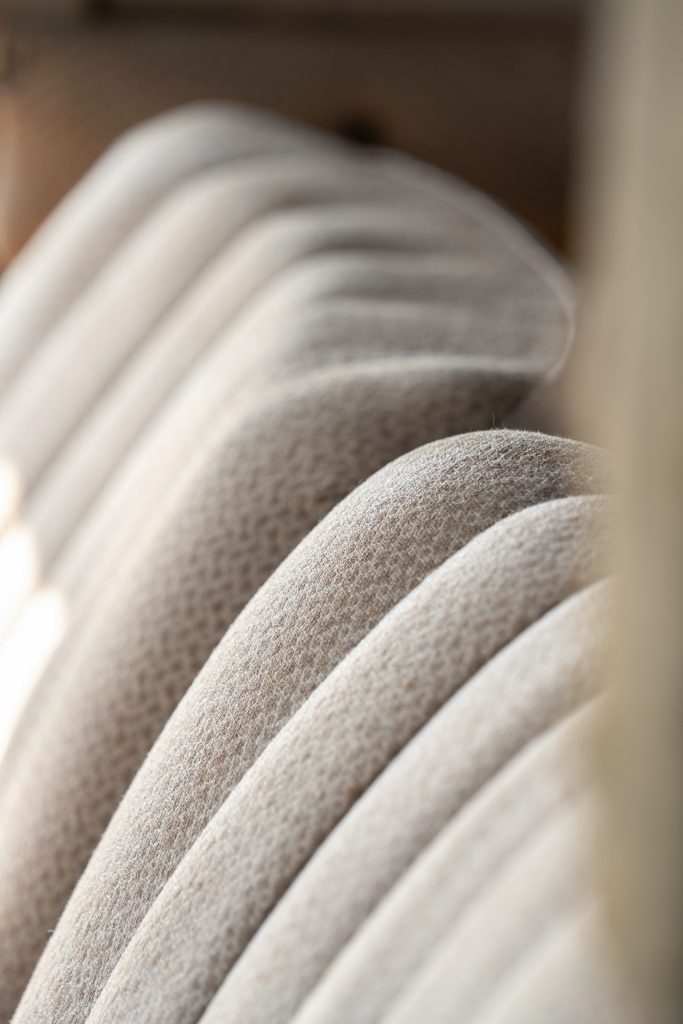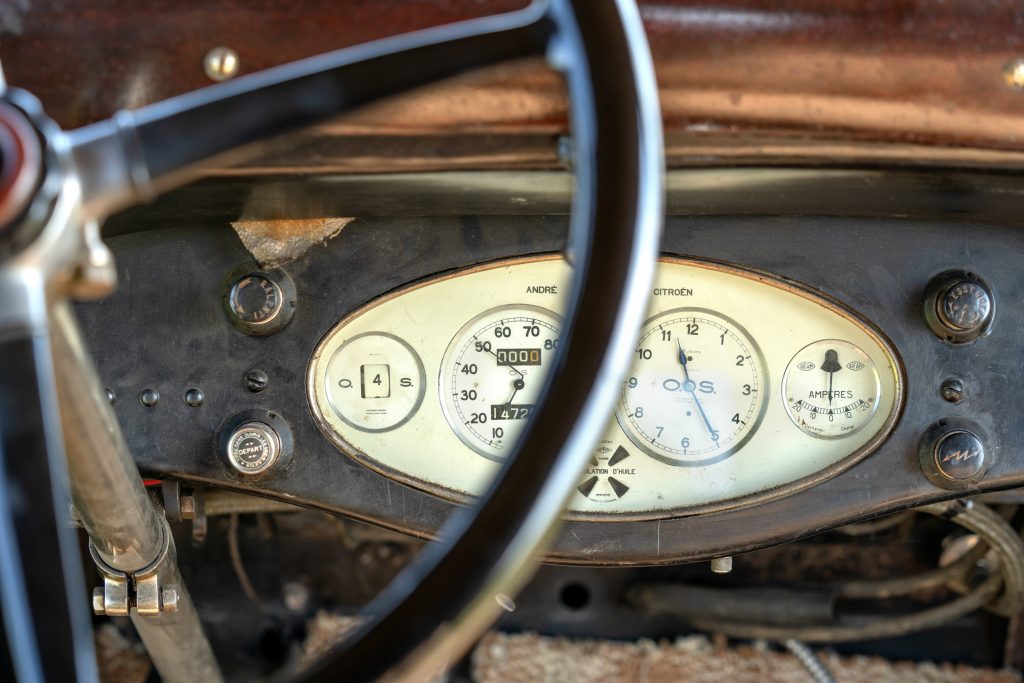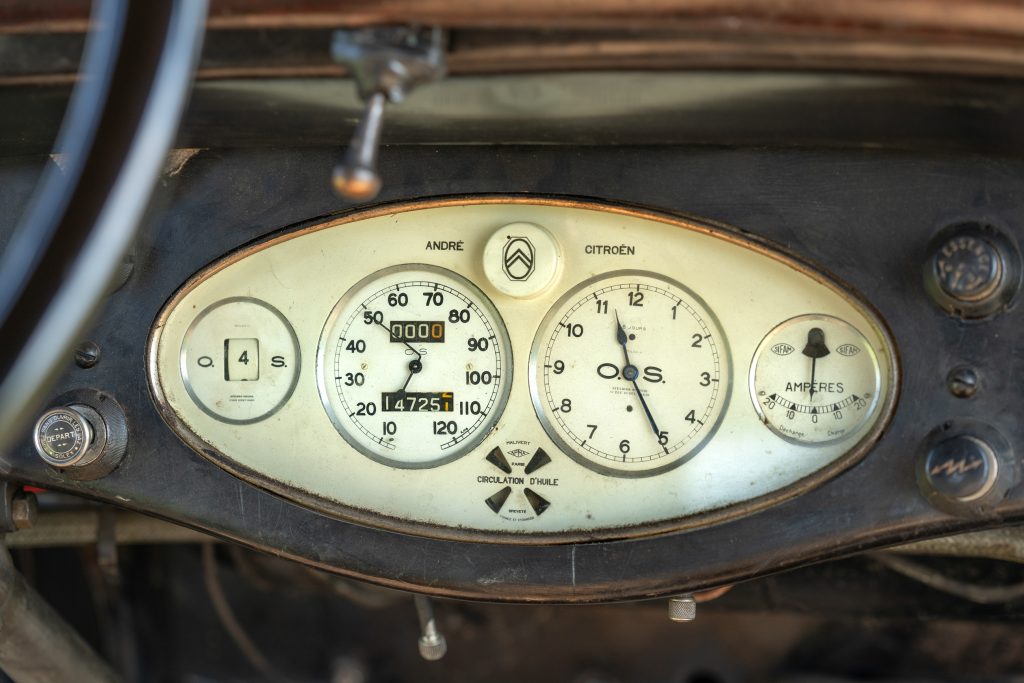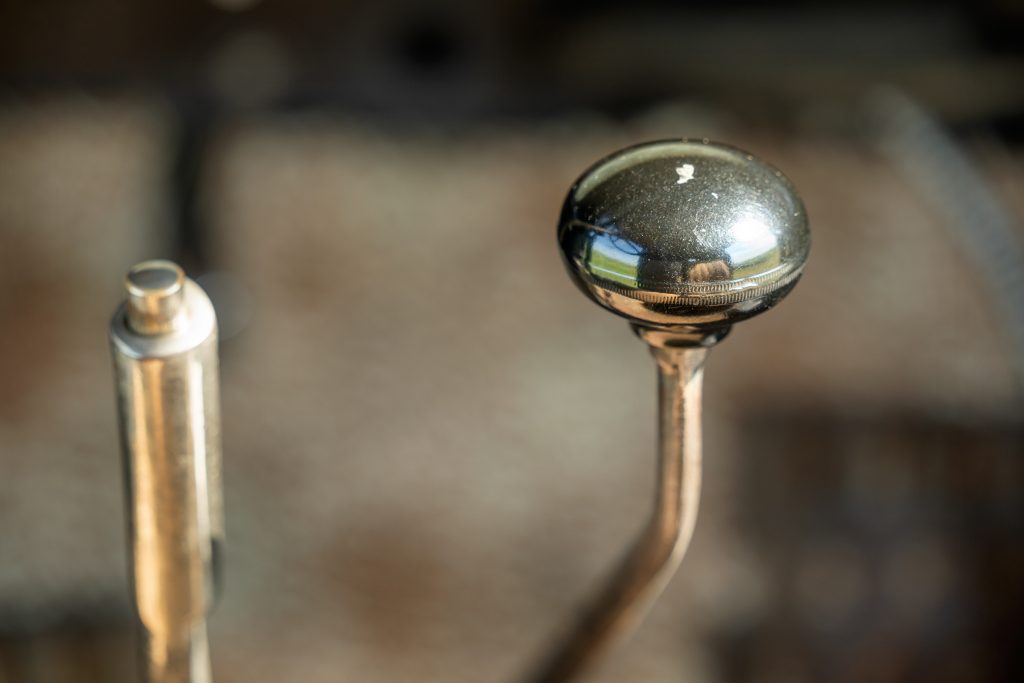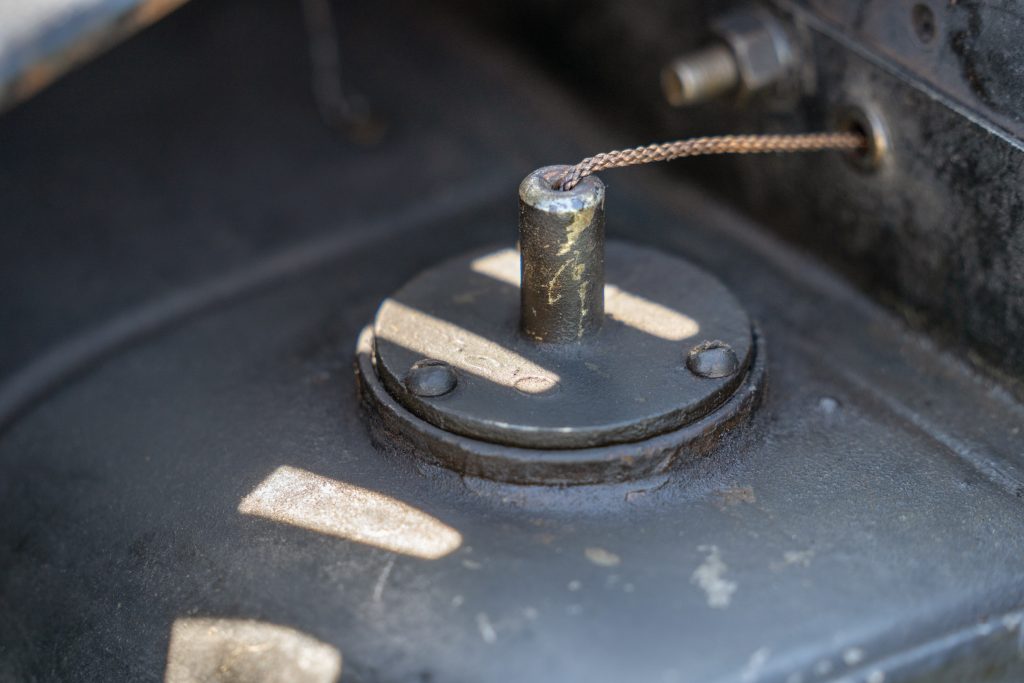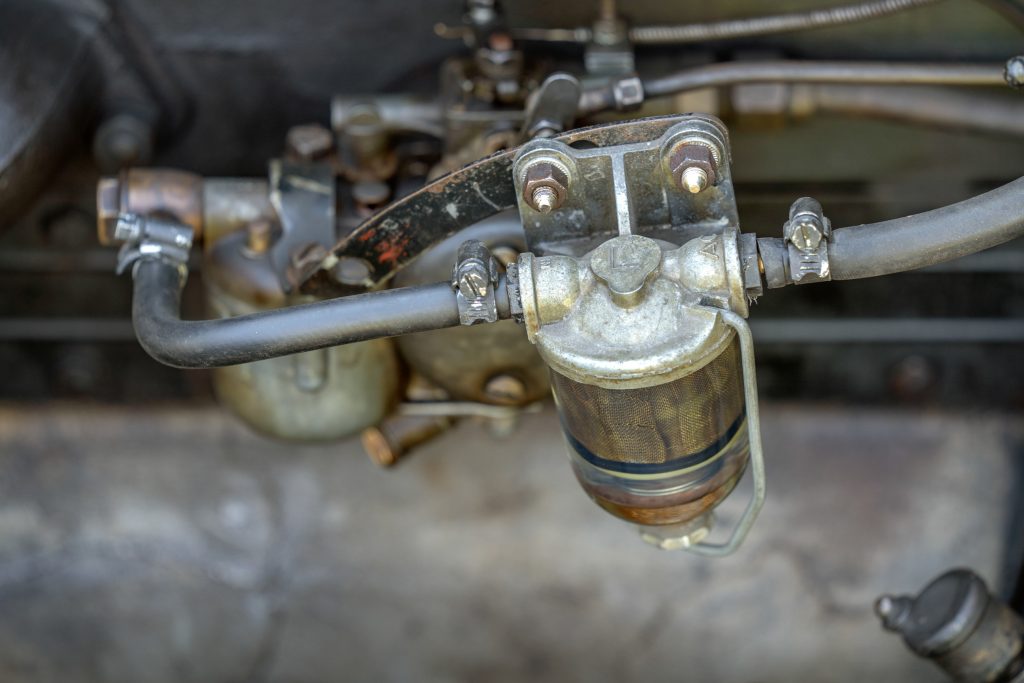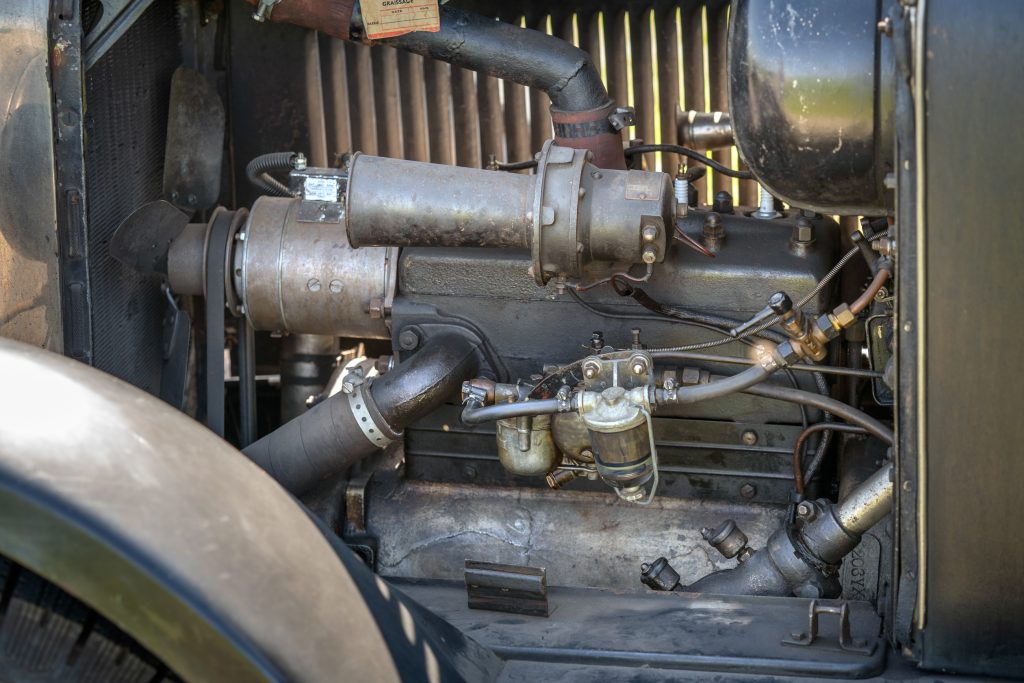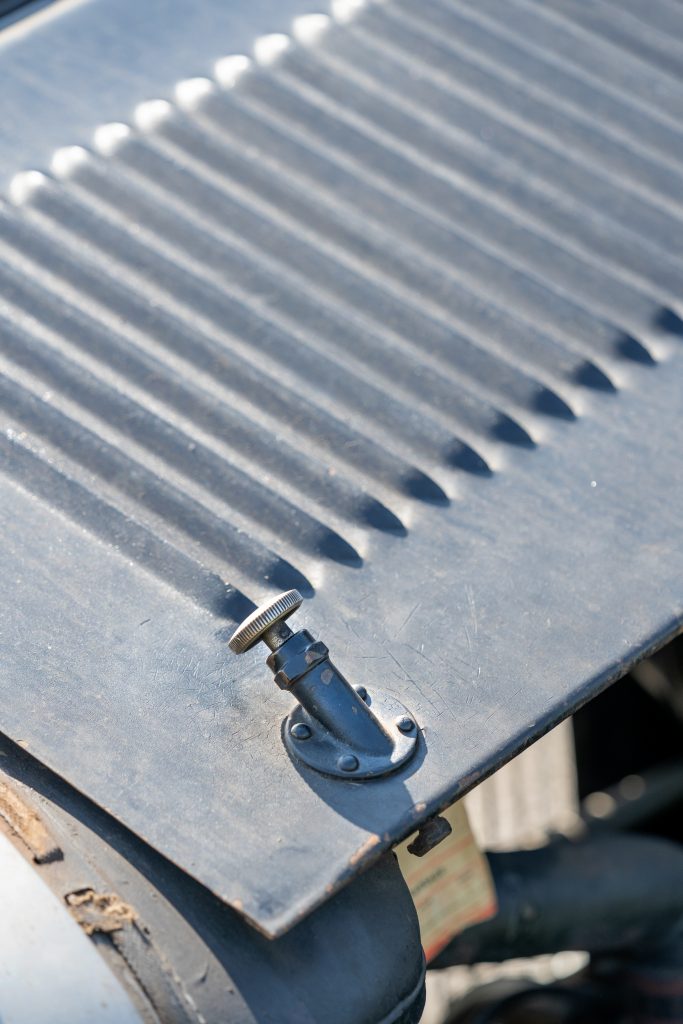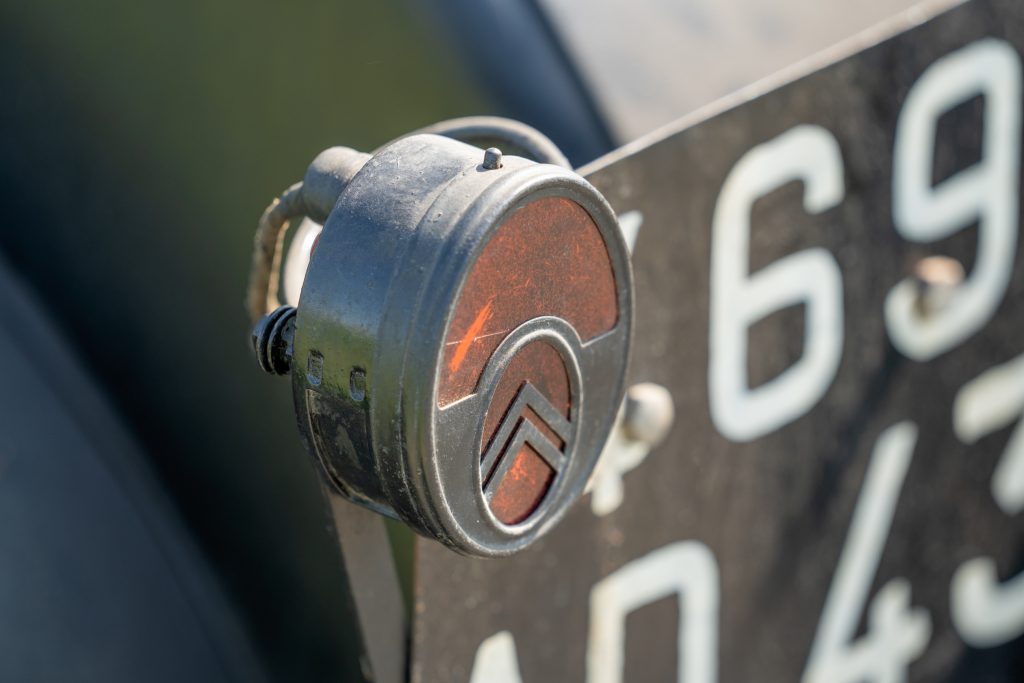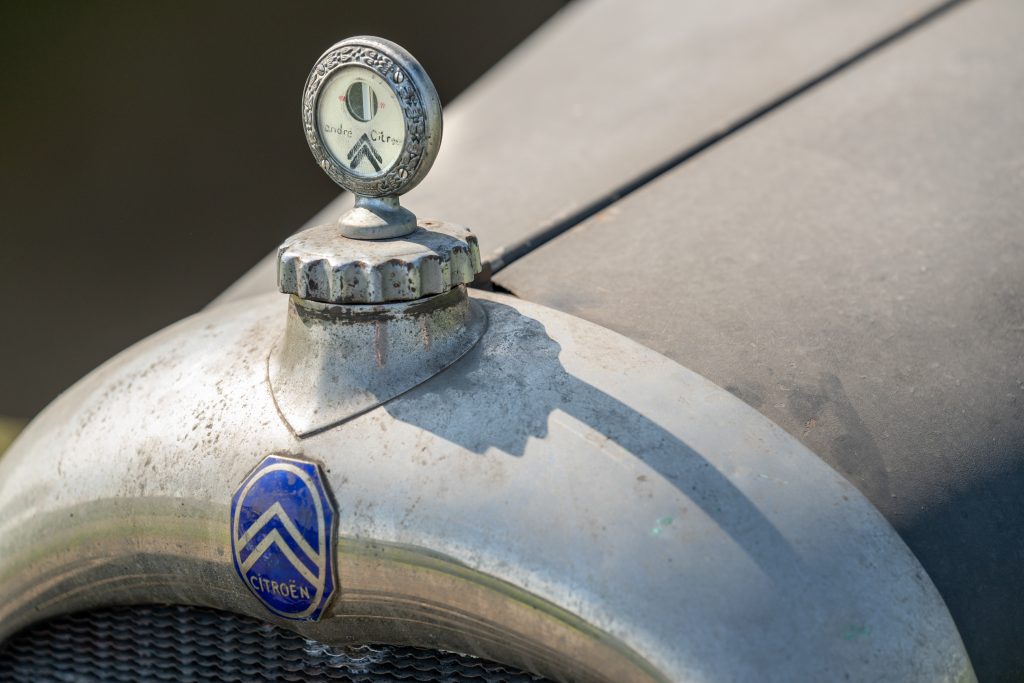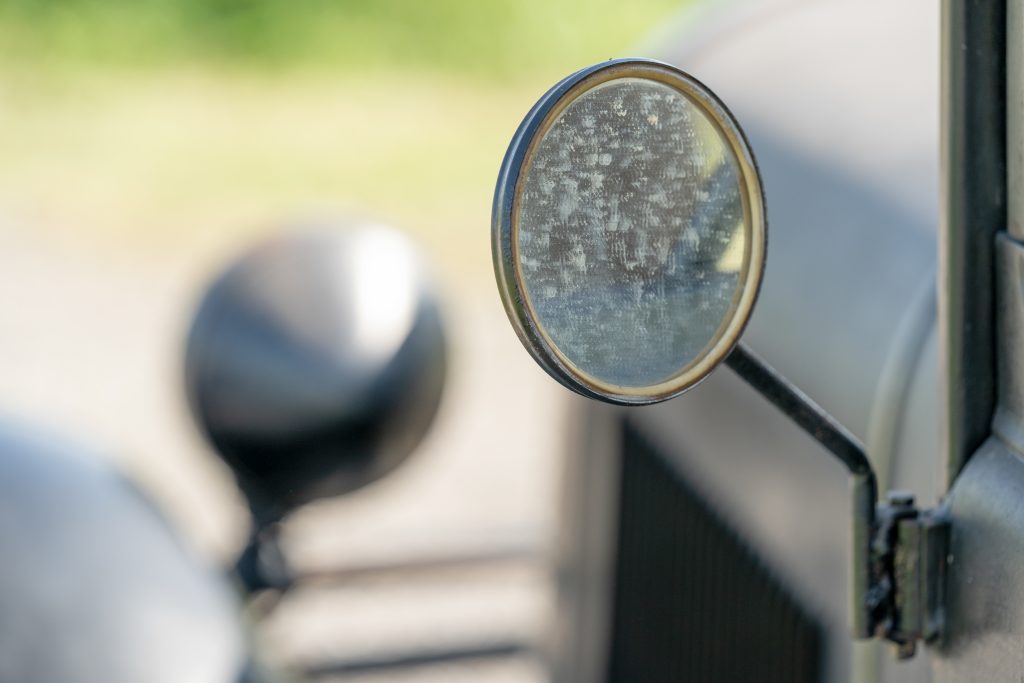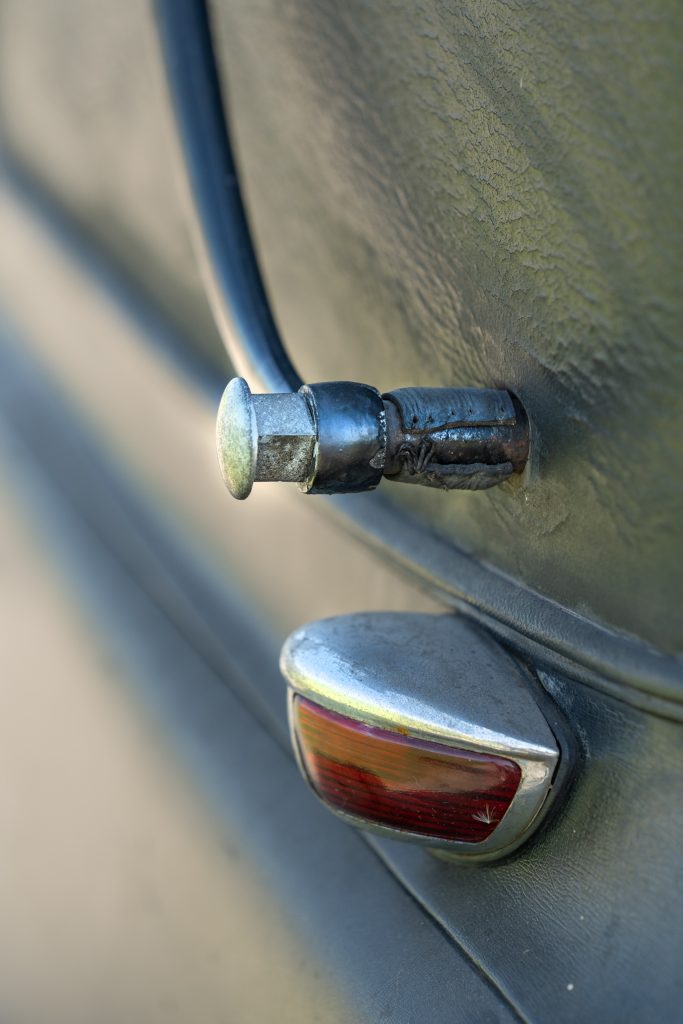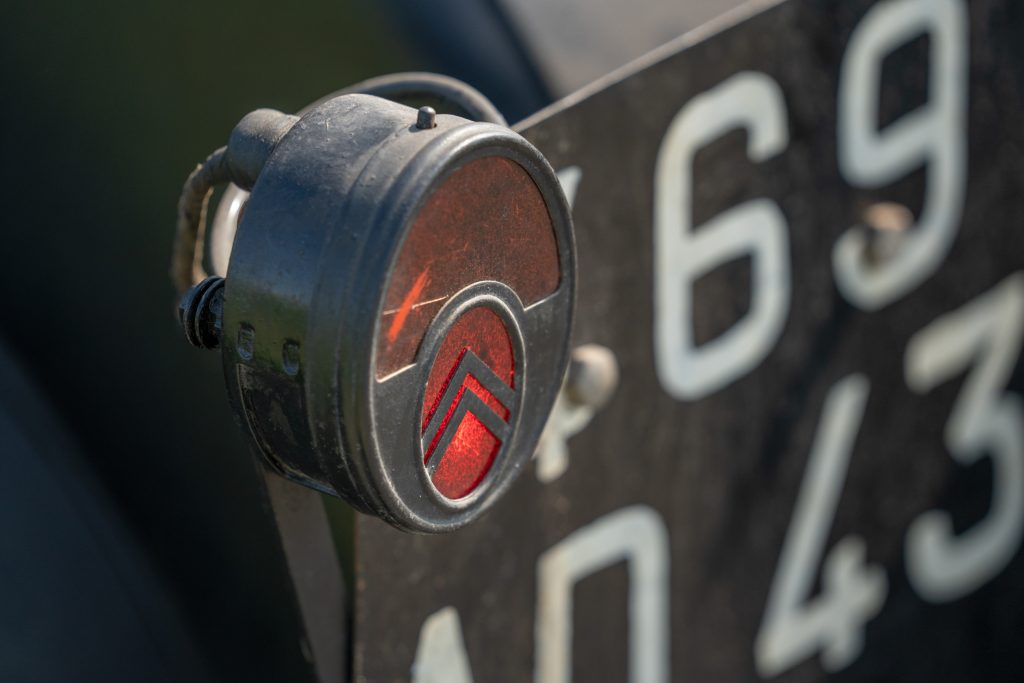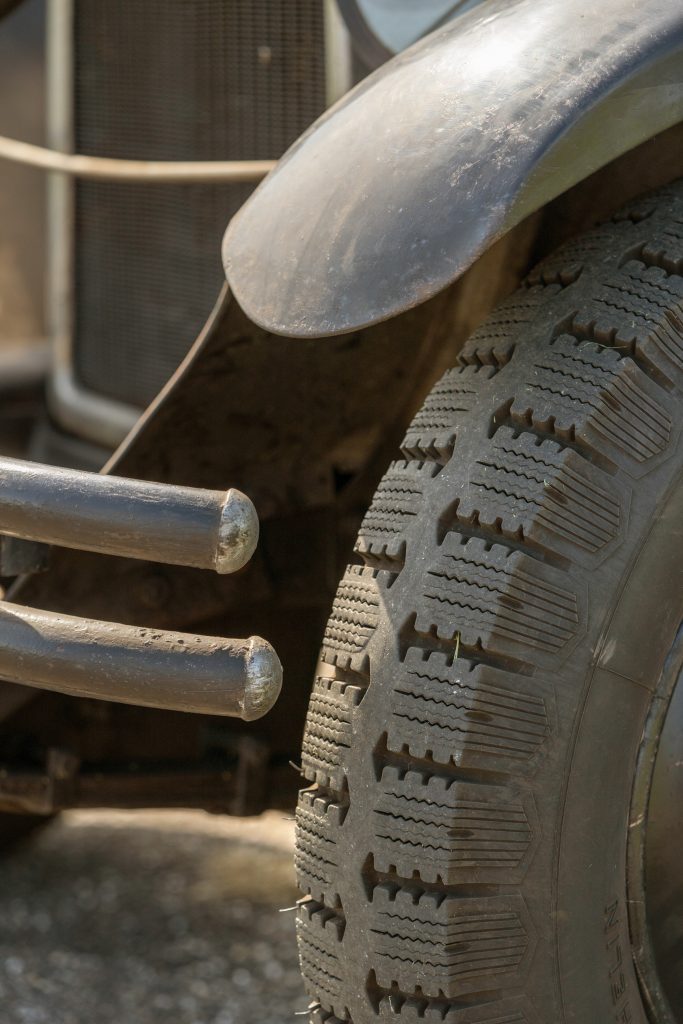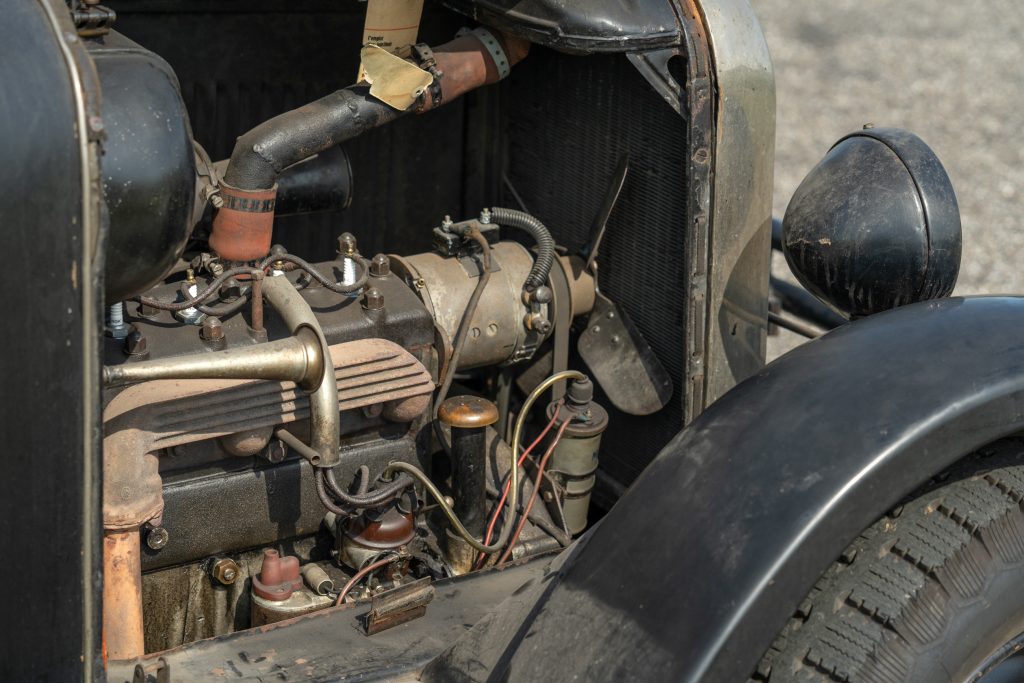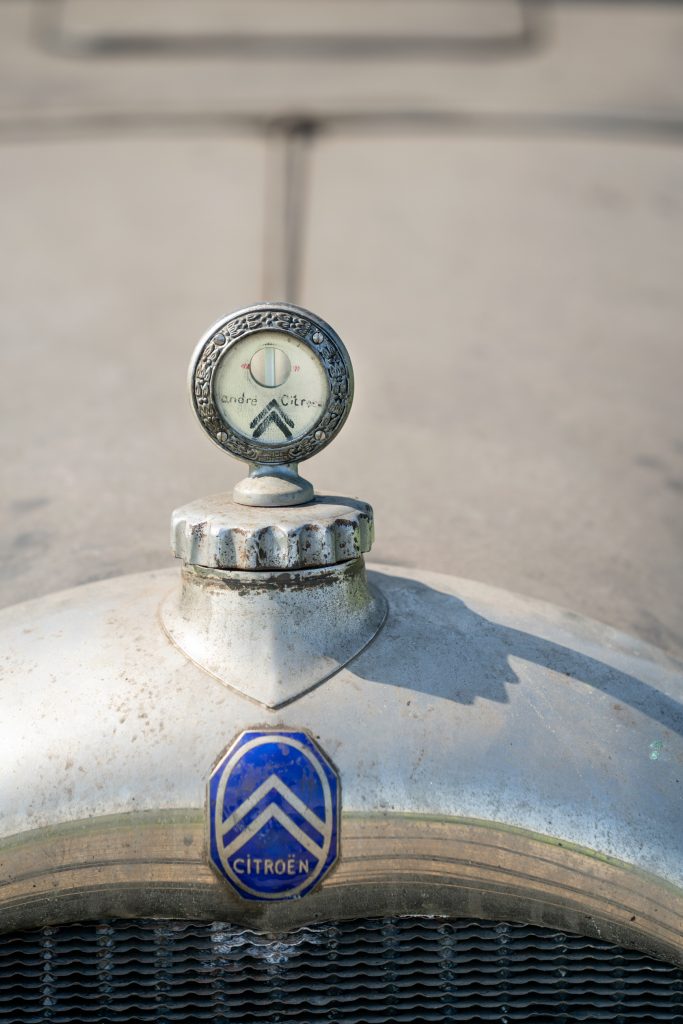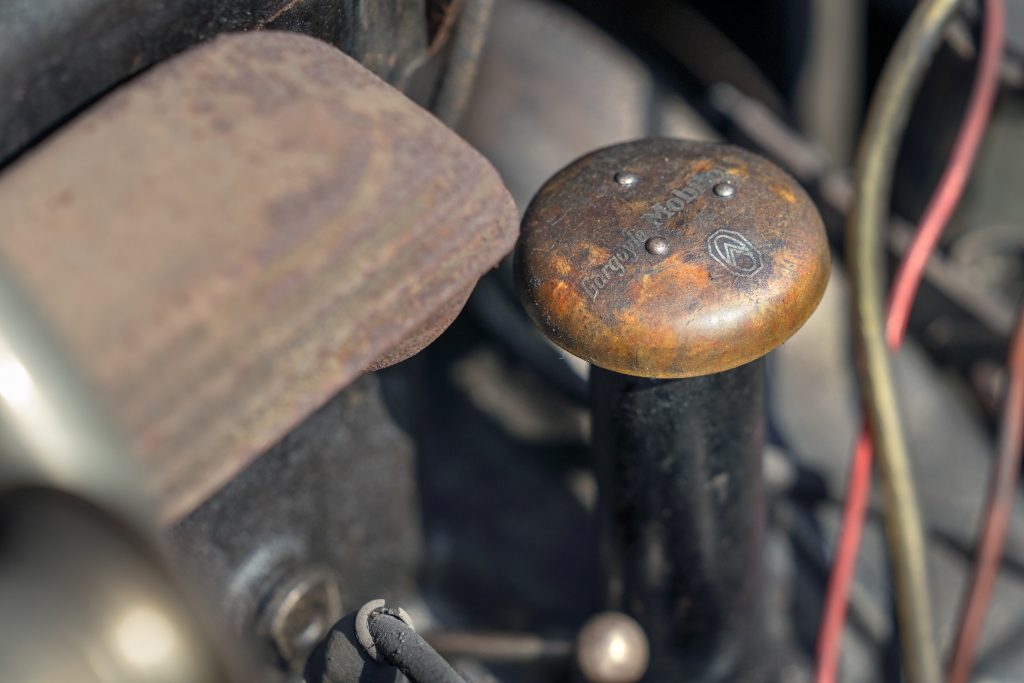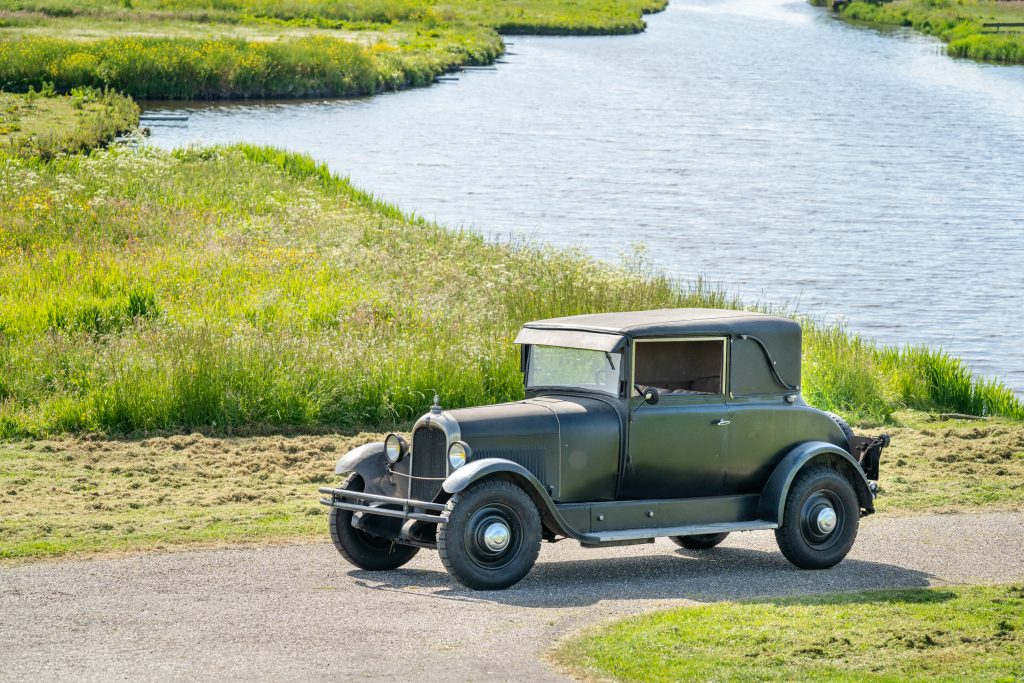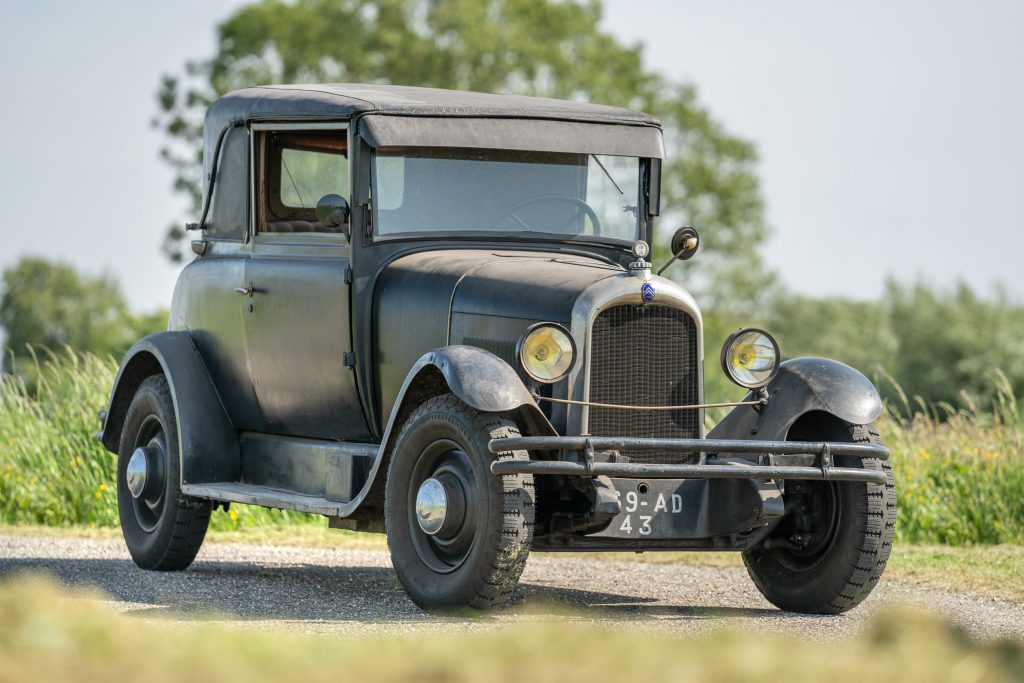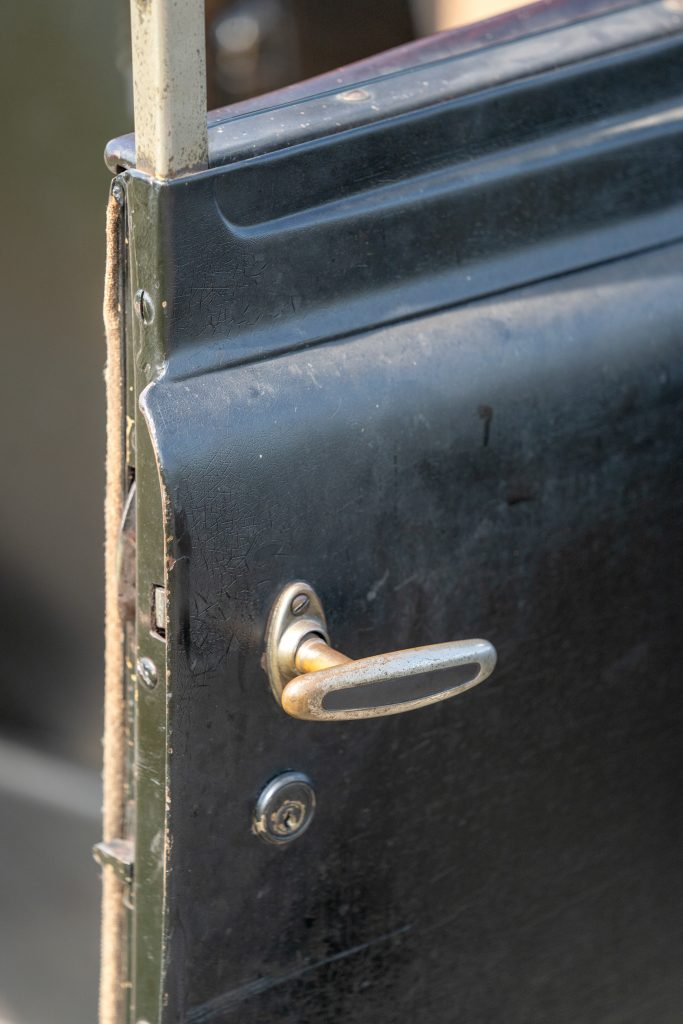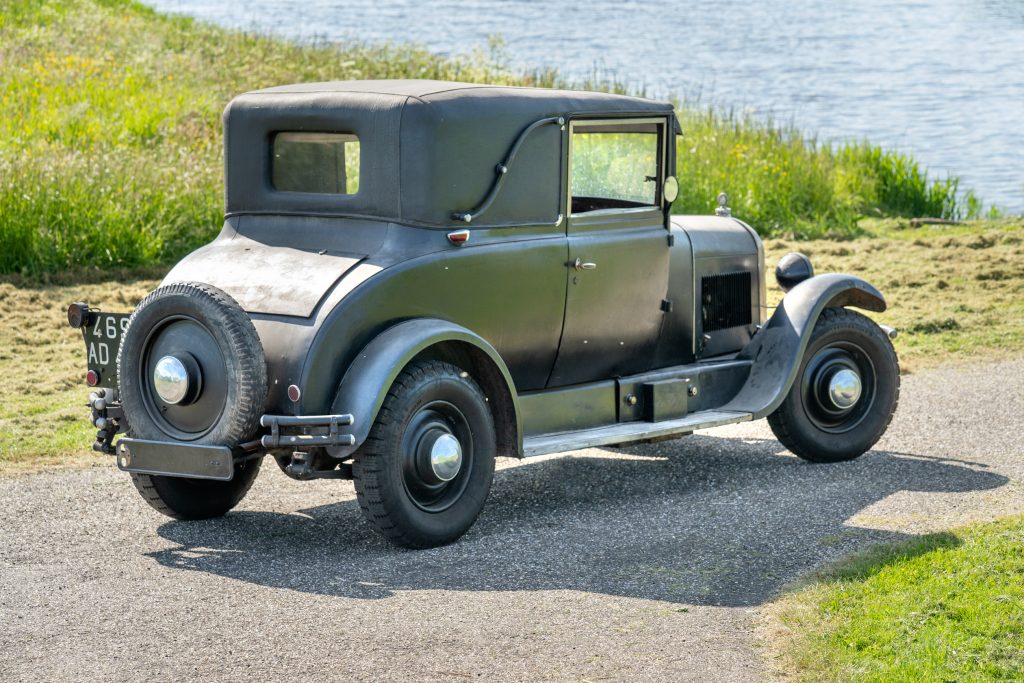B14G Faux Cabriolet
So far our oldest was from ’49, the first year of the 2cv. Wait, we also had an HY from ’48 once. Pre-war cars were usually too old and slow for us, too antique. But this B14 stole our heart.
We found it in a basement garage in Amsterdam, where it had been for about twenty years, mainly standing still. In the company of other classic stuff, all post-war. It is still completely original, never restored and still mobile. We fell silent for a moment. 91 years old and so fit: that’s unique. It’s still in first or period paint and very untouched.
In 1928 it was delivered in the department 03, Allier, in central France. The old, painted license plate can still be read under the current one. The type is Faux Cabriolet – a false cabriolet – whose roof seems removable, but is not. A model that was in fashion at the time. So chic, even Bugatti used it.
The owner was told a story the car had been ordered by a doctor. His wife couldn’t stand him driving with horse and carriage anymore. Hence perhaps this body shape, which still reminds of a carriage. He drove it for a while, but didn’t like it. He returned the car to the garage saying: “those cars are not going to be around for long”. Good story, not sure it’s true. The history is not extensively documented in writing, but the car tells a large part of it itself.
It received a new license plate in ’53, in department 43, Haute Loire. All French cars were given new license plates in that period, like we were moving from provincial to national license plates here in Holland. New requirements were also set for the lighting; on the rear it had to be at least on the left and indicators had to be mounted. This B14 got two fixed rear indicators, two folding ones next to the windscreen and a relocated rear light. The license plate moved with it.
Cars from this era did not drive distances like today. If you look at the original interior, you’re immediately convinced it has not driven much, otherwise the fabric would have had more wear. According to the Carte Grise, the car changed ownership in ’71. It went to a garagiste in Brioude. We think it mainly gathered dust and admiration there and with previous owners. In the late 1990s it was found by a Dutch garage owner and collector of Voisins, who later handed it over to the current owner.
The car has driven its first round since its departure from the dark garage. Who will accompany it to its centenary?


